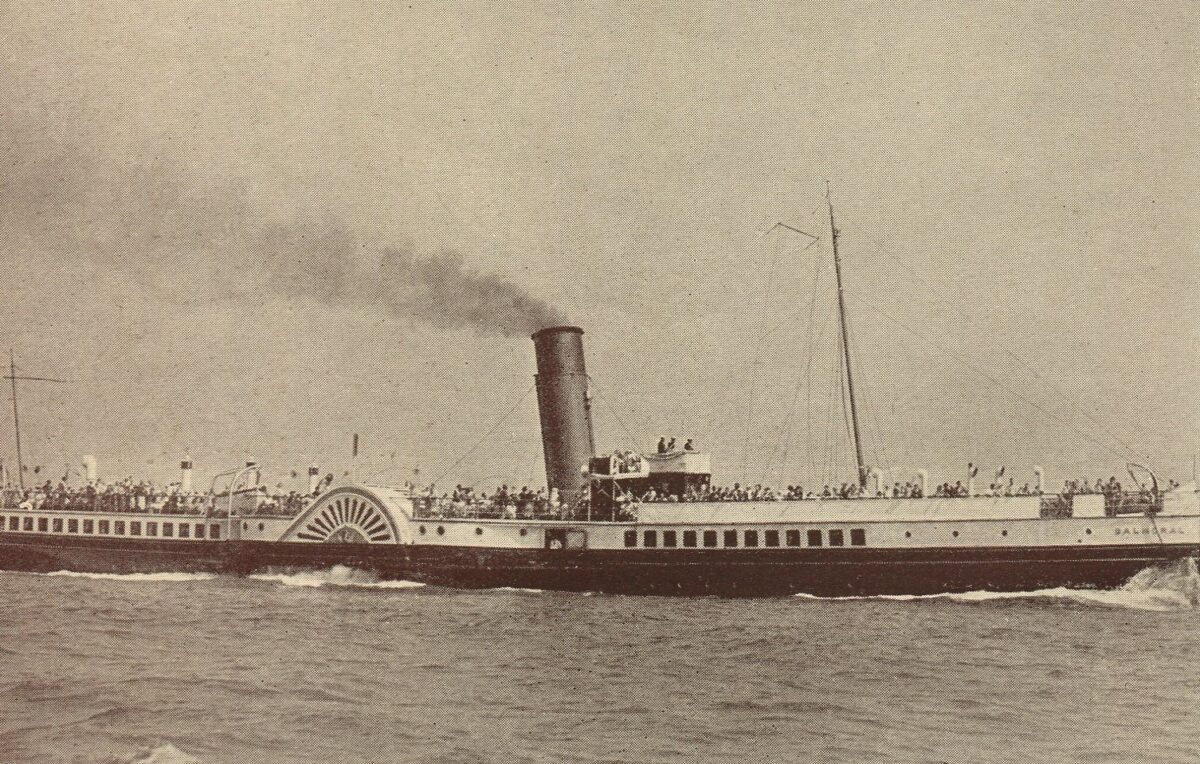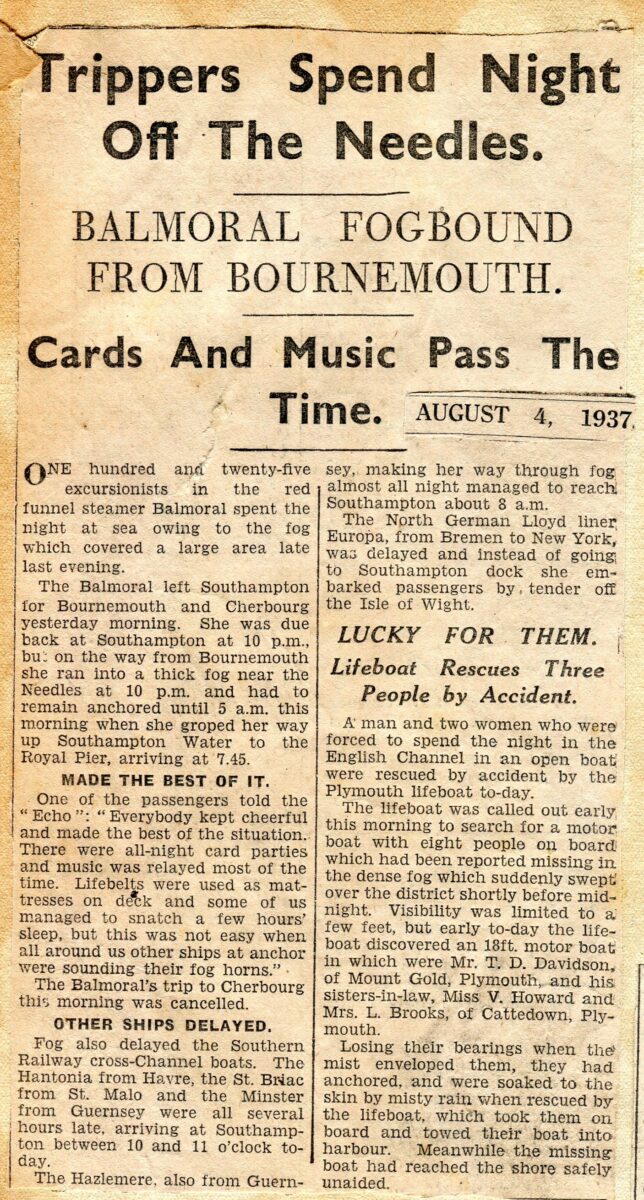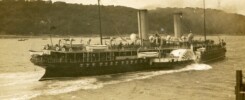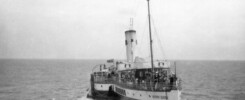
Balmoral spent the night of Tuesday 3rd and into the early morning of Wednesday 4th August 1937 at anchor in thick fog off the Needles with 125 passengers aboard.
She left Southampton early on the Tuesday morning at 7am for Bournemouth where she picked up the majority of her passengers that day for a departure at 9am across the Channel to Cherbourg where she was due in around 1pm to give passengers about three hours ashore. She left the French port at 4pm and was scheduled to drop off at Bournemouth at 8pm with a view to being back in Southampton by 10pm.
However she was running late that day due to patchy visibility in the Channel. With thick fog descending in the approaches to the Needles Channel and coinciding with nightfall, Captain Goldsmith decided that it was not safe to continue with the trip and so came to anchor.
During the night the passengers made the best of things using lifejackets as makeshift mattresses. Music was played over the tannoy to help keep people’s spirits up. Some indulged in all-night card parties. Others tried to get some sleep although that was easier said than done with the sound of foghorns from other ships and the Needles Lighthouse constantly being blown.
By 5am on the Wednesday morning visibility was starting to improve so Capt Goldsmith ordered the anchor to be raised and proceeded on in cautiously groping his way into the Solent and on up Southampton Water to the Royal Pier Southampton where Balmoral arrived at 7.45pm, nearly ten hours late.

It is a good reminder of how things were before the days of radar and satelite navigation transformed the ability of ships to steam on in fog. In those days navigation in restricted visibility was by dead reckoning and, if you were in any doubt, the thing to do was to go to anchor.
A course was run off between two points, making due allowance for the wind and tide. The distance between these two points was measured and from that, and a knowledge of the ship’s speed through the water, the captain could calculate how long it would take to get there.
For example, leaving Bournemouth Pier on a heading of 105 degrees the distance to the SW Shingles buoy off the Needles is 10 nautical miles so if Balmoral had been steaming at 16 knots it would have taken her 38 minutes to get from Bournemouth Pier to the SW Shingles buoy on that heading. So 38 minutes after leaving Bournemouth Capt Goldsmith would have expected to be in the vicinity of the SW Shingles buoy. If her speed had been 14 knots then the expected time taken would have been 43 minutes and so on. That’s how it was done. Another aid to help confirm the ship’s position is to take the depth using the lead line.
During the trip eyes would have been peeled on the bridge with a lookout positioned in the bow. Captain Goldsmith would have listened out for the foghorn from the Needles Lighthouse which gives out two long blasts every 30 seconds so that would have been a help. And whilst the SW Shingles buoy has no sound signal on it today I believe that back then it was fitted with a bell to make it easier to locate in fog.
Proceeding further than that on this sort of blind navigation is hard enough in daylight. By night it is pretty near impossible and by 10pm on 3rd August it would have been dark. So in my view Captain Goldsmith did absolutely the right thing in going to anchor off the Needles and waiting for daylight to emerge the next morning before continuing particularly given the hazards in the vicinity of the western approaches to the Solent not only with the Needles rocks themselves but also with the Shingles Bank on the western side of the Needles channel.
As to the passengers they seem from the press report to have generally taken it all in good part and made do as best they could. And what else can you realistically do in such circumstances? Throwing a temper tantrum and stamping your feet because your day has been “ruined” and you may be late for work tomorrow and demanding that the captain “do something” might have made people feel better but it wouldn’t have changed anything.
And Captain Goldsmith got all his passengers safely home in the end and through his skill and judgement avoided going down in history as the “man who wrecked the Balmoral“.
Kingswear Castle returned to service in 2023 after the first part of a major rebuild which is designed to set her up for the next 25 years running on the River Dart. The Paddle Steamer Kingswear Castle Trust is now fund raising for the second phase of the rebuild. You can read more about the rebuilds and how you can help if you can here.
John Megoran
This article was first published on 3rd August 2021.


